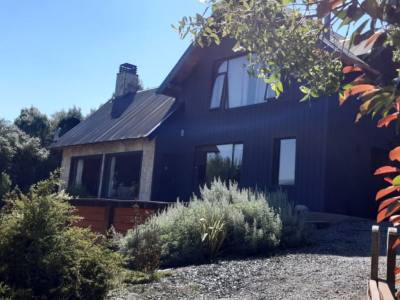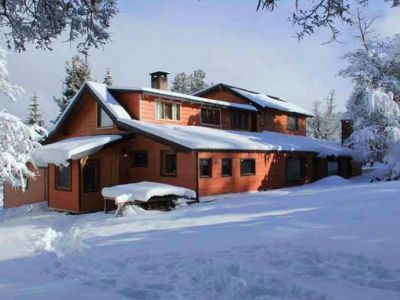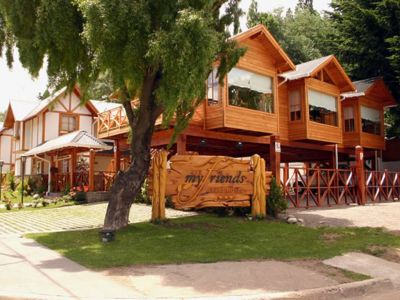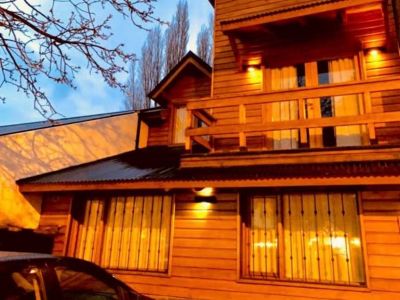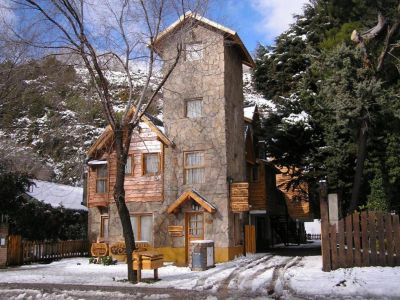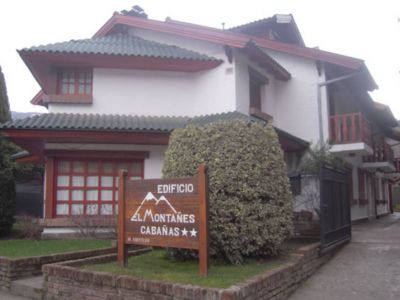Touring around the City of San Martín de los Andes, we came to a poster reading: “Rodeo in Upper Trabunco”. As we saw it, we felt very enthusiastic about that rural environment, full of tradition and so close to the city. So there we went. We started at the shores of Lake Lácar, taking the monument to Gral. Roca as a reference, we turned left into the paved road that borders the back of the former Hotel del Sol. From that point onwards, the road is made of gravel and it is one of the accesses to Mount Chapelco. “Trabunco” is the name of a river that empties its waters into Lake Lácar and crosses an area dwelled by a Mapuche community. These are people very much used to living in the countryside, to leading with cold temperatures and snow, and whose economy has changed in the last few years. In the old days, they would only depend on the sale of firewood and handicrafts. At present, and particularly the younger generations, have mingled in the working lifestyle of San Martín de los Andes. In spite of that, they remain faithful to their beliefs and customs taught to them by their elders.
A Rodeo Day
Surrounded by hills and ravines, we crossed the spot known as Puente Blanco, where native families spend their life breeding goat, ox and domestic animals. The horse is part of their daily life, both as a means of transportation and as an assistant for agricultural tasks. The rodeo is the appropriate moment to show skills while riding and taming the animal. Enjoyment began as soon as we reached those lands. Green hills with shrubby trees, woodlands with very tall species and plenty of silence. Little houses were scattered around with their pens and a few domestic animals. From a distance, the cloud of dust marked the field where the rodeo was being held. Once we were close, an attractive smoke smelling of asado was another ingredient for our outing. We entered the venue and the festive atmosphere took hold of us. All around, we could see men dressed in their best garments: they were wearing their favorite sash and the hat or beret they wore everyday. Entire families accompanied and encouraged the riders. The spokesman, assisted by a rural poet, would liven up the lapse between one colt and the next. He said that local and guest riders from neighboring areas would give way to their passion to get ready for the Camp Tender National Festival, held every year in February in Junín de los Andes. From the pen located in the background, they brought a curveting untamed chestnut-colored horse which refused to be tied to the hitching post, from where the rider would start to show his skills. Then there came the introduction of man and animal. The former, wearing his botas de potro (special boots made from the skin of the horse's leg), jumped onto the back of the animal deprived of a saddle. Eight seconds was the mark he had to hit. He had to remain on the animal using his spurs on the animal's back all the time. The field assistants and the judge were attentive to every detail in the rules. When everything was ready, the judge lifted his whip. The nervous movements of the animal, in addition to the strength and braveness of the rider himself created a great cloud of dust that covered the scene while the attendants screamed and shouted. The young man tested his manhood successfully during those few seconds and everyone celebrated. Quite uneasily, the chestnut-colored horse continued its way to the pen, where the rest of the troop was waiting for their turn. There was a break until the next duet made itself present and we were invited to visit the canteen. The old settlers, leaning on the wire fence, remembered their youth. Some children would ride around while the horses were led through the reins by some relative. Thus, the various trials followed one another. We spent a truly rural afternoon. Southern rodeos have some features of their own in relation to the ones held in the pampas, but the effort and the commitment of the riders is the same. As the sun set behind the mountain, we started our way back to the city. Once again, the hills, the green grass and the Mapuche houses followed one another. At the time of the farewell, we were invaded by a feeling of huge respect towards this people who still preserve their traditions. They let us into their land and we could take part in their activities. We said good-bye until the following year, when a sign will lead us to our new friends once again.
Find here hotels and accommodations in San Martín de los Andes
Mónica Pons
Eduardo Epifanio



















